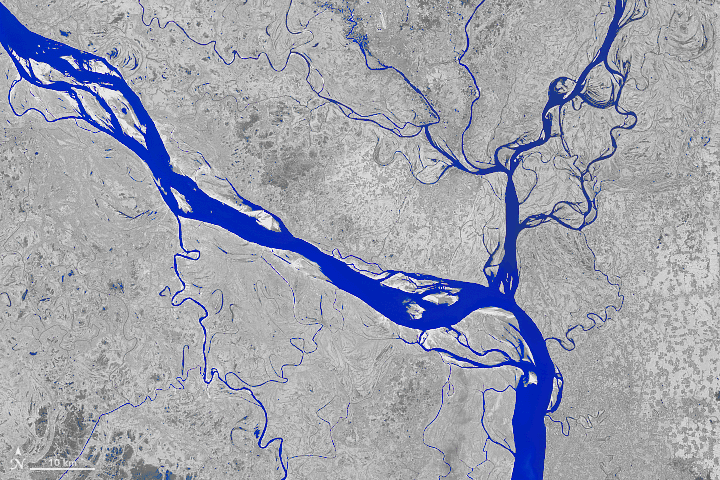Every year, thousands of hectares of land erode and fall into the rivers in Bangladesh. Rising water levels swallow homes and push families to poverty. Social media could play a significant role to reduce such disaster risks, writes Nahid Hasan.
"Our house was quite far away," says Nasima Begum as she points to the other side of Rupsha, a river in southwestern Bangladesh. "But it has been washed away due to the river bank erosion," she adds.
Bangladesh, one of the densely populated countries in the world, is highly vulnerable to natural disasters. While the deadly impact of cyclones and floods on coastal communities is well-known, the issue of river bank erosion, a slow and silent disaster, is often overlooked. River bank erosion is a naturally-occurring process when water wears away at the banks of a river or stream.
Nasima Begum's story is just one example of how riverbank erosion could lead to despair. It leads to large-scale destruction, leaving thousands of people homeless, apart from the damage to crops, cattle, homes, and farmland. For most people affected by river bank erosion, migration is the only way to survive. Some families residing in riverine regions have been displaced more than ten times in a lifetime. This has serious socio-economic consequences, such as children dropping out of school and joblessness among youth.

Locals who are affected by river bank erosion, often survive by way of fishing, as they adapt to a rather nomadic way of life, frequently changing homes. Families try to constantly rebuild their lives as they live at the edge of disasters. They have learned to be flexible, responding to disasters by moving before the flooding season starts. For example, they build houses by using wood and Nypa fruticans, a mangrove palm. Social bonding plays an important role in this process. People move to their extended families in other districts and share land and stay together.
River bank erosion is a serious problem in Bangladesh. It has long been a part of life because the country sits on a young and dynamic river delta. For example, the Padma river's waters continuously shift and transform the shape of the river, eating away its banks. This is caused by deforestation, extreme weather condition, and the accumulation of silt. Climate change is accelerating the risk of river erosion by intensifying rains and floods. Such disasters might push several communities into extreme poverty.

The government is trying to tackle the problem by distributing land to affected communities who lost their land to the river. But the new land is not always suitable for agriculture, making it hard for people to escape poverty.
The BEDS (Bangladesh Environment and Development Society), an NGO working on environmental issues, is supporting these communities by planting mangroves along the embankments. The roots of mangroves keep the land stitched together, thus preventing erosion. This also helps to improve biodiversity and reduce dependence on timber for sustenance.
Mangrove plantation is the only way to reduce the effect of climate change as well. Mangroves play an important role in stabilizing the world’s climate by way of their high carbon-storing capacity. If a mangrove buffer zone is created among the rivers and the Sundarbans coastal belt, it will not only help in carbon storage but also will act as a shelter to the coastal people.

But I think there is another interesting way to move forward. We could better use risk assessment tools and digital technology to predict river erosion in advance. With help from satellite data and social media messages by local communities, we can estimate where river erosion is going to take place. This information will help us to manage rural development in riverine areas.
For these vulnerable groups, quick action is needed, especially in the light of rising sea levels. Rising waters and salinization will massively affect their livelihoods and farmland in the coming years.
It's now or never for those who live in the margins of society.





